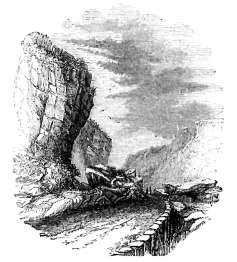Strongbow's Seal
An impression on green wax of his seal still exists, pendent from a charter in the possession of the Earl of Ormonde. The seal bears on the obverse a mounted knight, in a long surcoat, with a triangular shield, his head covered by a conical helmet, with a nasal. He has a broad, straight sword in his right hand. A foot soldier, with the legend, "Sigillum Ricardi, Filii Comitis Gilleberti," is on the reverse. The last word alone is now legible.
Notes
It probably owes its origin to the Danes. Cambrensis gives some interesting details about it, and mentions several miraculous occurrences which caused it to be held in great veneration in his days. He specially mentions the case of a young man in the train of Raymond le Gros, who had robbed him of his greaves, and who had taken a false oath before the cross of that church to clear himself. After a short absence in England he was compelled to return and confess his guilt, "as he felt the weight of the cross continually oppressing him." Strongbow's effigy was broken in 1562, but it was repaired in 1570, by Sir Henry Sidney. Until the middle of the last century, the Earl's tomb was a regularly appointed place for the payment of bonds, rents, and bills of exchange. A recumbent statue by his side is supposed to represent his son, whom he is said to have cut in two with his sword, for cowardice in flying from an engagement. A writer of the seventeenth century, however, corrects this error, and says that "Strongbow did no more than run his son through the belly, as appears by the monument and the chronicle."—Gilbert's Dublin, vol. i, p. 113.

Keim-An-Eigh
